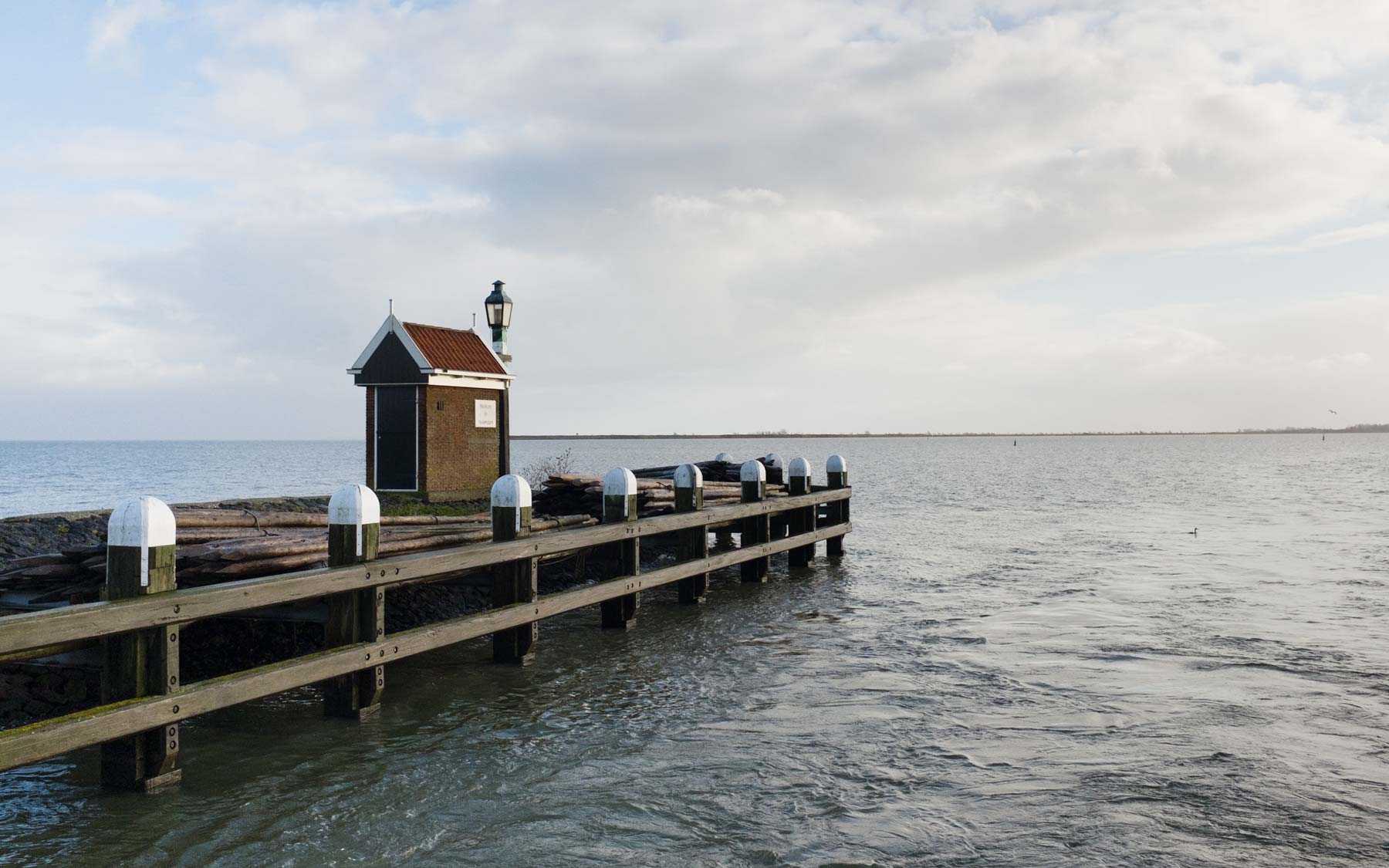Volendam
18 Oct 2015

Looking out across Markermeer
Hot tip: Amsterdam is a great place to visit, but you need to get out into the countryside for a balanced view of the country. This is the land after all that has vastly increased it’s land area through land reclamation and, with the need to make good use of what arable land they’ve got, has some of the highest agricultural output in the world.
With the benefits of reclaiming land comes the upkeep to keep it that way. It takes years to convert an area of seabed to solid ground; first through building the walls of the ‘polders’ to begin reclamation, years of pumping to dry the land, and years more of conditioning to make the land arable. The result of all of this effort must be maintained and protected to keep it that way; this reclaimed land after all is below sea level and highly susceptible to flooding.
This is part of the reason for the Afsluitdijk; a 32km long, 90m wide dike, finished in 1932 as a response to seawater flooding. The Afsluitdijk separated the inner harbour, subsequently named the Markermeer, from the open water. Being separated from the sea, the inflow of freshwater into the Markermeer made the water less salty over time and eventually transformed it into a freshwater lake. Nature is not without it’s balance, however. As the water became cleaner, fish populations decreased and the local fishing industry went into decline.
One of those towns affected is Volendam. Walking around the quiet streets, it’s still easy to find some kibbeling to throw down the hatch, but tourism is the name of the game nowadays. The rhythm of the day consists of periods of tumbleweeds interspersed with fresh batches of tourists.